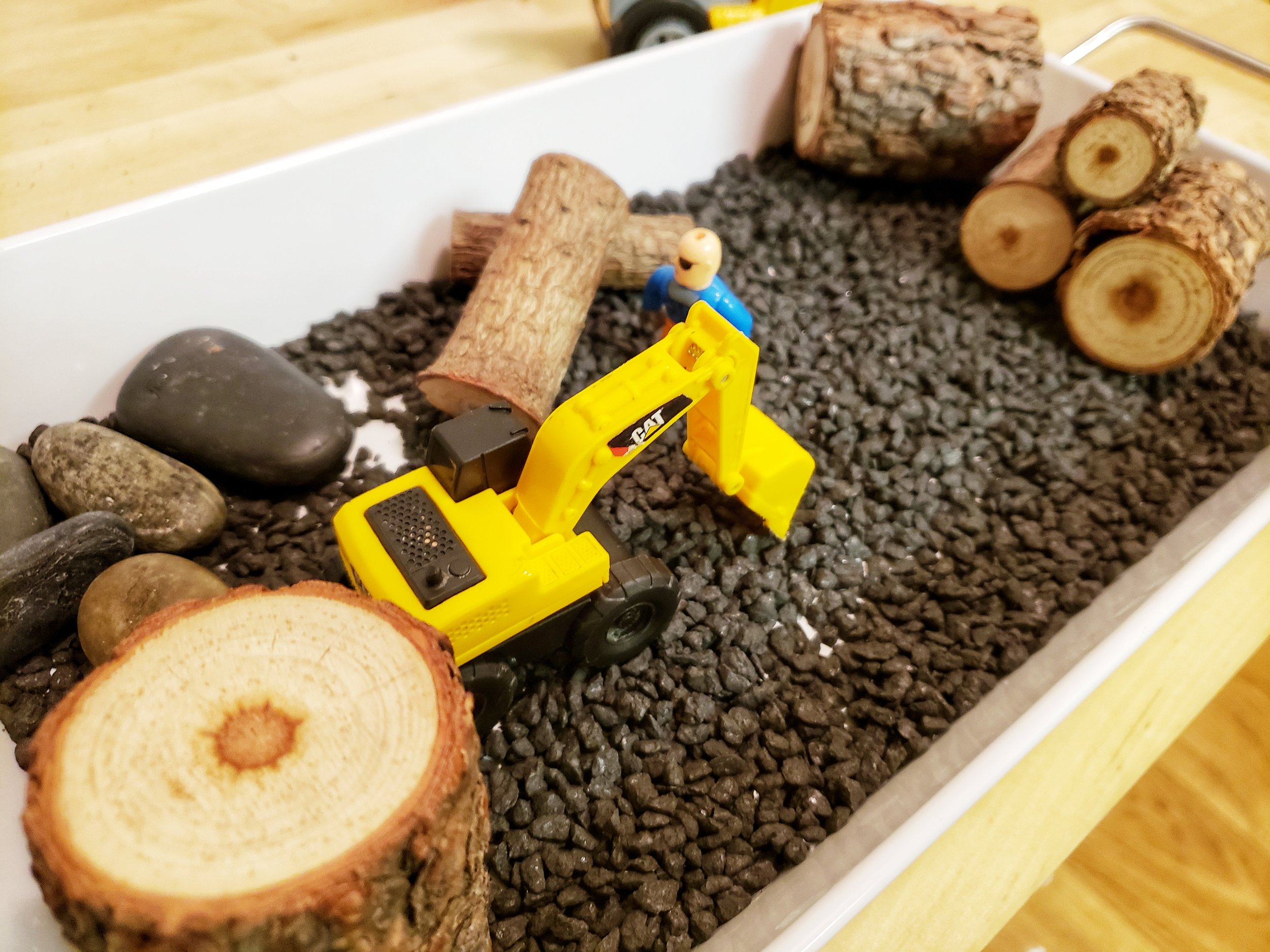The Magic of Kinetic Sand
Kinetic sand feels and "behaves" much like wet sand and was originally made for sculpting but has found its way into many classrooms.
It is by far one of my favorite items for the preschool classroom and for good reason.
Why Kinetic sand?
Kinetic Sand is a great sensory experience for children.
Not only is it unique in the way that it feels, but compacting it, molding, and kneading it gives children the tactile input that they need in multiple ways.
It can be incredibly relaxing for kids who want something soothing.
The slow almost lazy movement of the sand, as well as the soft texture, can really be grounding and help calm busy minds and bodies, especially for children still learning to regulate emotional responses. This is also therapeutic for stressed-out teachers!
But it can also be equally stimulating for kiddos who need something to smoosh and squeeze. Kinetic sand can be stuffed into cups and hold its shape and easily flattened back into a pancake.
It's a really great tool to use for fine motor skills, such as using the knife to cut through the sand, building grip strength (a crucial prewriting skill) while forming and compacting the sand, and kneading through the sand or using tweezers to pick up toys out of the sand.
Kinetic sand can also be used to extend/enhance learning, such as using colorful sand for color recognition, using it as a base for a small world setting, burying letters/numbers for children to uncover, or using it in dramatic play to make ice cream cones and waffles.
Kinetic sand also doesn’t dry out!
That means you can use it over and over again if you remind the kids to wash their hands before using it.
You can store it in a ziplock bag, a jar, or just leave it in the sensory bin/container and even without a lid, it will be fine.
It's also easier than other materials to clean up should it spill on the floor or carpet since it just clumps together.
It's super easy to DIY your own Kinetic sand as well. All you need is:
Dish Soap
Water
Fine Sand (you can buy from the craft store)
Cornstarch
Food Coloring (optional)
First, mix the sand and cornstarch together
Then mix the water and dish soap (you want it to be bubbly) in a separate bowl
Then slowly add them together until you get the right consistency
You can fold in the food coloring afterward if you choose to add color or diluted essential oil for scent.
Depending on the consistency of your sand, you may have to add more water. You do want to avoid using craft sand that has a lot of rocks and pebbles (like playground sand) or is too chunky.
If you're not a DIY kind of person you can always buy kinetic sand on Amazon or in most big stores like Walmart.
Let us know in the free facebook group for early childhood educators: Do you use Kinetic sand in your classroom?
Enjoy This Post? Don't forget to share with other teachers!
























Aggressive behavior like hitting, kicking, and biting are easily cited as one of the most stressful behaviors in the early childhood classroom. Here are some tips for handling aggressive behavior in the PreK/daycare classroom.